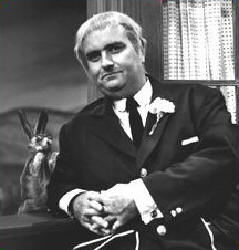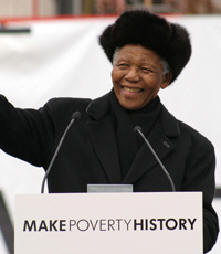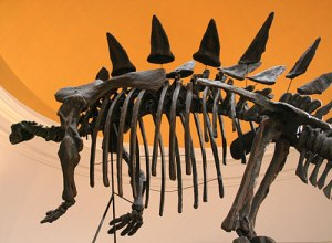 |
||
The Mandela Effect: Alternate Realities |
||
| There’s a common assumption in our modern western world that there
is one shared reality, that can be factually verified through time
and by people all around the world. This assumption may seem so
obvious to be not worth mentioning–except that it’s quite possible
that it’s untrue. |
 by Cynthia Sue Larson |
|
| such as the so-called “Mandela
Effect” reported by Fiona Broome in 2010 and the “Berenstein Bears”
reported by a blogger named Reece in 2012 are but two indicators
that the public is becoming aware that history doesn’t always remain
the same. |
||
 |
Earliest Reported “Mandela Effect” Cases In a small sample size survey conducted in 2005, I reported that nine celebrities at that time were noted for having been reported dead by reputable sources, only to subsequently be reported very much alive again. In a note we might find interesting now, but that didn’t seem surprising at the time, nobody in the summer of 2005 mentioned Nelson Mandela. Back in July 2005, the celebrity heading up the “Alive Again” list was Bob Keeshan,an American actor who played a TV character known as Captain Kangaroo. A whopping 26% of |
|
| those surveyed at that time recalled that Bob
Keeshan had died before 2004, and then died again in January 2004. The next most-often remembered “alive again” (aka “Mandela Effect”) celebrities back in 2005 included:Jane GoodallLarry Hagman, Bob Hope, Jack Palance, Bea Arthur, Ed Asner, Walter Cronkite,andMariel Hemingway. |
||
 |
Where was Nelson Mandela back in 2005? We might well ask, “Why didn’t anyone mention Nelson Mandela being alive again back in 2005 when that first survey was conducted?” which is an excellent question. At that point in time in 2005, neither I nor anyone I surveyed made a point to mention remembering what many of us would later recall–that Nelson Mandela had died many years earlier than his currently recorded official date of death of December 5, 2013. Fiona Broome’s first mention of the Mandela Effect was still five years in the future, and he was not yet on anyone’s radar–including those who were starting to talk about the “Alive Again” phenomenon. |
|
| You might think perhaps Nelson Mandela was “lying low” while alive
back in 2005, and not making major media appearances–yet according
to current history, we find Mandela got coverage in February 2005 when he came out of retirement from public
life to give a speech in Trafalgar Square to 20,000 people. Mandela
called for action to end ‘unnatural poverty’ in a speech
covered by BBC News as
well as most all of the major news networks. This is a speech I have
no recollection of, as one might expect from someone like me who’d
thought up until a few years ago that Nelson Mandela had died
decades earlier. So while our current history shows that Mandela
remained politically active and publicly visible off and on over the
past decades, I’ve been unaware of all these activities unless I
look them up and read about them and watch them now–which for me is
for the first time. |
||
 |
The Case of the Missing Bolton Dinosaur During this same time period when I was conducting the first surveys about the earliest reported incidences of the Mandela Effect, a town in the United Kingdom noticed it seemed to be missing a dinosaur. A full-scale model of a dinosaur was an oft-mentioned favorite memory from the 1960s for many visitors to the Bolton Museum and Art Gallery, as a January 2006 article in |
|
|
The Bolton News describes–yet as of 2006, there was no longer
any official record that any such dinosaur existed.This was a matter of importance to the community,
since restoring the old exhibit would have saved the museum the
time, effort and energy required to obtain a new dinosaur exhibit in
2000. Alan Rushton, leader of the Conservative group on Bolton
Council, said: “One
of our dinosaurs is definitely missing! Am I supposed to accept that
my eyes deceived me, or this enormous dinosaur was a figment of my
imagination? I remember as a schoolboy going on visits to the museum
and standing in awe, looking at it. I raised the matter when I was
on the arts committee but we were never able to find any trace of
it.” What’s Going On? What I’ve been documenting since 1999 are first-hand reports from people noticing changes in reality all around the world. What I’ve noticed over the years is that these reports of people and things appearing, disappearing, transforming and transporting are the very types of phenomena we’d expect to see on the quantum / microscopic scale of the very, very small–yet they’re happening on a grand scale. People are noticing items such as their socks and keys moving around as if by themselves. People are noticing they remember events differently than siblings and friends. And sometimes people notice they’re disagreeing about what happened moments earlier. These realizations come forth at the very point in time that humanity enters the new Quantum Age, in which most every field in science now has the word “quantum” in front, including: Quantum Biology, Quantum Cognition, Quantum Cosmology and Quantum Statistics. While quantum logic and phenomena has long been shunted aside as irrelevant (aside from creating nuclear reactors or nuclear weapons), we’re now at the beginning of the “quantum invasion,” as inventors, engineers and scientists strive to be first to build quantum computers. Amidst this new gold rush of our times, scientists are finding that people such as Quantum Biologist Johnjoe McFadden and Quantum Cognitive Scientist Jerome Busemeyer who I’ve featured on my radio show, Living the Quantum Dream, are leading the way in demonstrating how quantum phenomena are occurring all around us in Nature in our everyday lives. What is becoming increasingly clear is that as we seek a “theory of everything” unifying the classical and quantum realms, it seems to be finding us. And many of the seemingly bizarre properties of quantum physics appear to be everywhere around and inside us, including occasionally making surprise appearances where we least expect them. How to Record Alternate History Reports Since people reading about alternate histories and the Mandela Effect often begin to experience increased incidences of shifts in reality, keeping records of what’s observed becomes important. Questions about alternate histories need to include descriptions of several points in time, that include three points in space and time. Such a journal entry would be recorded to include how, “Today, on date and time Z we are recording that at at date and time Y we became aware that apparently some kind of change had occurred at date and time X involving ____________ being different in these ways __________________.” |
||